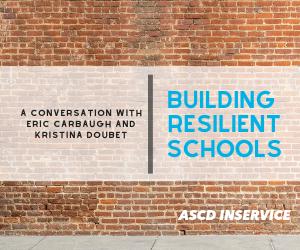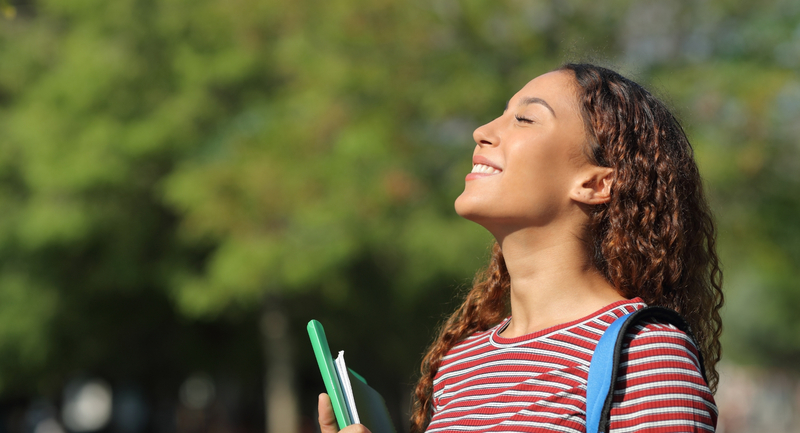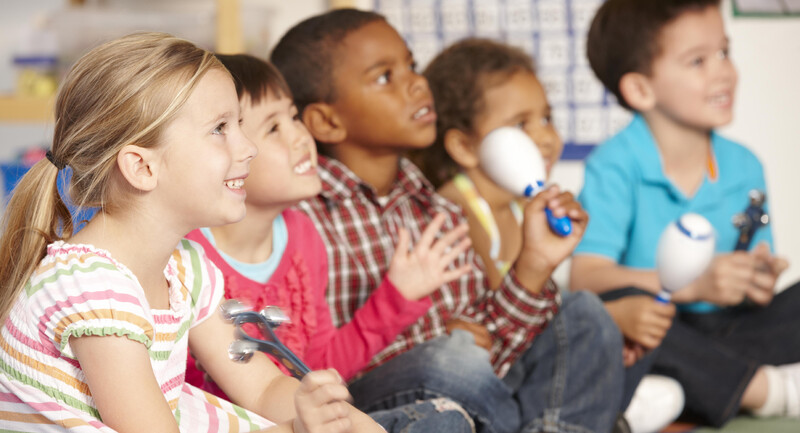When leaders of Topeka Public Schools in Kansas first began to think about a new approach to mental health for students nearly a decade ago, they knew one thing for certain: being proactive was lifesaving.
Superintendent Tiffany Anderson and principal Joy Grimes had seen firsthand how waiting was a dangerous game. After a new student attempted to take their life in 2017 soon after arriving in the district, Anderson and Grimes began to wonder what they could do to catch red flags early on, “screening for mental health as we do for eye and ear exams,” says Anderson. At the time, it wasn’t uncommon for the district to have three to five suicides per year. The question sparked an overhaul in the leaders’ methods to identify and support students’ needs.
Young people’s mental health and wellness is a heightened concern, as the latest issue of EL highlights. The CDC has rung alarm bells about the growing number of children seeking help for mental health issues; nearly 15 percent of young people ages 5 to 17 received treatment in 2021. U.S. Surgeon General Vivek Murthy has made youth mental health one of his primary concerns, citing the pandemic, social media, and loneliness as contributing factors to students’ stress and anxiety. Concerns are higher for specific groups of students, including for Black and Brown youth and gender-diverse students who report higher stress levels and fears around safety, belonging, and discrimination.
Anderson and Grimes—who lead their district’s Mental Health Committee as chair and co-chair, respectively—have solidified a comprehensive, trauma-informed approach that is nationally recognized. Anderson, who has been central in developing the district’s resources, has received the 2023 Woman Superintendent in School Leadership award from the American Association of School Administrators and was one of USA Today’s 2022 Women of the Year. The work has grown into many channels, such as early detection of what issues students face, staff training, and wellness rooms. Topeka Public Schools serves roughly 13,000 students across 30 schools; since implementing new programming, all schools now have graduation rates above 90 percent and there haven’t been any suicides in six years.
“It doesn’t cost anything,” says Anderson, “and it’s been a gamechanger for us.”
For educators interested in replicating similar models in their own spaces, Anderson and Grimes share what they’ve learned over years of trying out initiatives.
1. Early Detection Using Mental Health Screeners
The first step of support begins before students walk in the door. During registration, caregivers of every new student fill out a mental health screener form with three questions on the district’s registration forms:
- Has your student experienced depression recently?
- Does your student have diagnosed mental health concerns?
- Has a loved one close to your student died in the last two years?
The questions are inspired by Dr. Nadine Burke Harris’s research on Adverse Childhood Experiences (ACEs). Schools can vary these questions based on their needs, Grimes says, but understanding students’ backgrounds up front, presented alongside a general physical health questionnaire, normalizes a holistic approach.
The answers go to each school’s mental health teams (made up of social workers, school counselors, school psychologists, and mental health liaisons), who follow up with families to offer tailored resources. The district has also partnered with the University of Kansas to help classroom teachers administer CI3T (Comprehensive Integrated 3 Tiered System of Support) screeners to students, which score students’ behavioral and social needs and are available online for free.
We’re going to talk about the challenges students are coming to us with and try to create interventions to help them through that.
“We don’t hide the elephant in the room,” says Grimes. “You have to have that baseline, especially if you have a transient population. We’re going to talk about the challenges students are coming to us with and try to create interventions to help them through that.”
2. Looking at Individual Needs
The mental health committee Grimes and Anderson lead starts by doing a “needs index” for each school building that considers factors like spoken languages, special education, poverty rates, and free-and-reduced lunch numbers, as well as information from the screeners. Based on that, each school shapes a smaller mental health team of specialists.
Through a grant from the Kansas State Department of Education’s Mental Health Intervention program, the district funds mental health liaisons, case managers, and in-school therapists who come to schools to meet with students, “eliminating the barrier” of students having to travel for mental health services, Grimes says. “Students just have to get to school.”
To support staff in understanding and approaching trauma-informed care, the district has partnered with the Childhood Trauma Academy to offer courses in Neurosequential Model in Education (NME) training grounded in understanding brain development and student behavior, especially around ACEs. Educators and leaders experiment with resources, such as therapy dogs or sensory and therapy rooms for self-regulation.
If one program doesn’t work, we look at another, so we’re not trying to push the round peg into the square hole.
The district also has seven alternative programs for students who need different school settings. Avondale Academy, for example, serves students who are coming out of the juvenile detention system with wraparound services, small enrollment, and a focus on behavior, academics, and attendance. “If one program doesn’t work, we look at another, so we’re not trying to push the round peg into the square hole,” says Grimes. “Instead, we build some square holes.”
3. Partnering with Community Support
Grimes and Anderson credit success to tapping into as many local resources as possible. The leaders say outside grants and partners have been invaluable to expanding their offerings, though Anderson also notes that much of this work can be done with free or low-cost resources. “Yes, having more counselors and social workers is a cost, but it’s more about changing or prioritizing what you use the dollars for,” says Anderson. “For example, many schools received ESSR funds. We chose to use our funds to hire more mental health mentors.”
Once a month, the district’s mental health committee meets with local partners to review student data and mental health research trends. Part of Grimes’ role is overseeing outside partnerships with organizations like Project Plus and the Family Service and Guidance Center, which provide skill-building and concrete resources to students and families.
We talk about the patterns our school psychologists and therapists are seeing with youth in the community.
“We talk about the patterns our school psychologists and therapists are seeing with youth in the community,” says Anderson. “Bringing people to the table who say, we’re going to commit time, and having a core group planning strategically helps us figure out what else we need to offer.”
VIsit the Topeka Public Schools web site to learn more about the district’s approach and to access resources.








